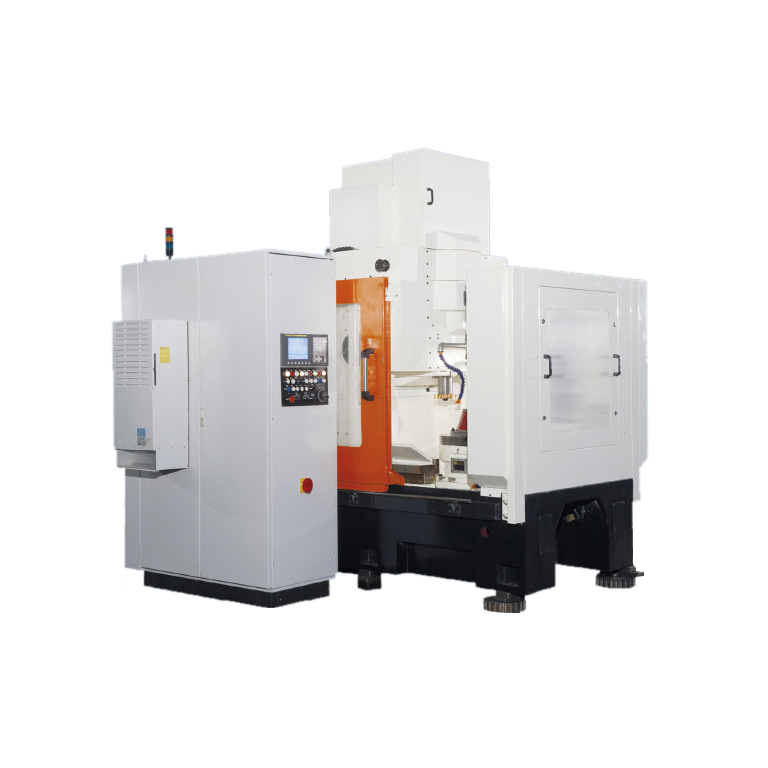CNC Internal external Gear Shaping Machine for Industry
CNC Gear Shaping Machine-- The Core of Precision Gear Manufacturing
In the modern machinery manufacturing industry, the gear shaping machine is one of the most representative gear processing tools. Whether in construction machinery, mining machinery, automobiles, tractors, or the aerospace industry, the gear shaping machine plays an irreplaceable role with its advantages of high precision, high stability, and strong adaptability. As industrial production continues to move toward automation and intelligence, the CNC gear shaping machine has also evolved, becoming a key piece of equipment in precision gear machining.

I still remember the first time I walked into a gear-machining workshop-- rows of gear shaping machines stood neatly in line, the entire shop filled with the rhythmic roar of machines. Skilled operators were busy beside each gear shaping machine, constantly replacing gear blanks with practiced precision. The up-and-down motion of the cutter and the synchronized rotation of the worktable created a harmonious rhythm. Whether cutting spur gears, helical gears, internal or external gears, the gear shaping machine completed every operation efficiently and precisely. It was a vivid demonstration of how technology and craftsmanship combine in modern manufacturing.
Technically speaking, the gear shaping machine forms the tooth profile through the reciprocating vertical cutting motion of the cutter, coordinated with the generating rotation of the worktable. Though the process looks simple, it demands extreme accuracy in motion control. The engagement between the cutter and workpiece, feed rate, and stroke timing all require precise coordination. Compared with hobbing, the gear shaping machine offers greater advantages in cutting internal gears, step gears, and other complex or special-shaped gears. Its easy adjustment and strong versatility make it ideal for multi-variety, small-batch production environments.

I recall one project involving a Belgian customer who provided a detailed gear drawing. Working with our technical engineer, we analyzed the module, pitch diameter, and structure, and quickly selected the most suitable gear shaping machine model. The engineer not only explained the reasoning behind the selection but also taught me how to interpret the customer's technical drawing and identify key parameters--an invaluable learning experience. Beyond recommending the proper gear shaping machine, we also discussed optional configurations, accessories, and auxiliary systems to ensure the customer received a complete, well-considered solution.
The gear shaping machine features a highly refined structural design. Its main cutting motion is driven by a servo motor that allows stepless speed adjustment, ensuring smooth reciprocating movement. The C1 and C2 axes control the rotational indexing of the worktable and cutter, guaranteeing precise gear generation. The X-axis provides radial feed through a precision ball screw, while the Z-axis enables vertical lift of the cutter head. During the return stroke, the S2 axis automatically retracts the cutter to prevent interference.
A modern CNC gear shaping machine typically adopts a six-axis, four-linkage CNC system that precisely coordinates all movements. The cutter head assembly employs hydrostatic guideways and hydrostatic bearings, giving the main spindle excellent rigidity, zero wear, and superior vibration resistance. These design improvements not only extend service life but also ensure outstanding tooth-profile accuracy and surface finish. Thanks to continuous innovation, domestic gear shaping machines are now reaching international performance standards.
The gear shaping machine also performs excellently in machining helical gears. With a dedicated helical guide and adjustable tooling system, it can handle a wide range of helix angles efficiently. The worktable is equipped with a hydraulic clamping system that firmly secures the workpiece, preventing any micro-movement during cutting. The synchronized control of radial feed and indexing motion, managed by the CNC system, greatly enhances automation and machining stability.

Compared with traditional mechanical machines, the CNC gear shaping machine offers far more than precision-- it provides intelligence, flexibility, and ease of operation. Operators can easily set parameters such as module, gear count, feed rate, and tool compensation through the CNC interface. Machining programs can be stored, recalled, and adjusted for different production runs. This dramatically shortens changeover time, making the gear shaping machine an ideal choice for manufacturers producing varied gears in small batches.
Proper maintenance is essential for ensuring the performance of any gear shaping machine. Because the spindle system relies on hydrostatic technology, lubrication and cooling systems must operate stably. A reliable coolant circulation system reduces tool temperature rise, extends tool life, and maintains consistent surface quality. Our after-sales team usually provides operation training and maintenance guidance after installation, ensuring that each gear shaping machine continues to operate smoothly for years.

Today, with the integration of CNC control, servo technology, and high-precision manufacturing, the gear shaping machine is entering a new era of intelligent production. The next generation of CNC gear shaping machines will feature higher automation, smart monitoring, and adaptive cutting technology. They will even enable remote diagnostics and data tracking--a true step toward digital manufacturing. Whether in automotive transmissions, industrial gearboxes, robotics, or aerospace applications, the gear shaping machine will continue to play an essential role in precision gear production.
In conclusion, the gear shaping machine is more than just a tool — it's the heart of precision gear manufacturing. It embodies mechanical innovation, accuracy, and craftsmanship. From traditional mechanical models to today's CNC gear shaping machines, every technological upgrade reflects the progress of the entire manufacturing industry. For every engineer and manufacturer, understanding the principles, performance, and potential of the gear shaping machine is the foundation for achieving higher quality and smarter production.


